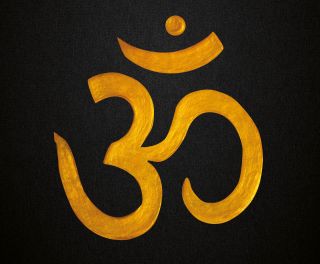Philosophy
How the Upanishads Transformed the Human Mind
In many ways, the Upanishads anticipated Greek philosophy.
Updated June 3, 2024 Reviewed by Kaja Perina
Key points
- Although a part of the Vedas, the Upanishads seek to upturn the old Vedic orthodoxy.
- The central vision is one of pantheism (all is God), so that the self or soul is a part of God.
- When Socrates argued for self-knowledge over knowledge, he made the same turn as the Upanishads.

The national motto of India, Satyameva Jayate (Truth Alone Triumphs), is from the Mundaka Upanishad.
“Upanishad” means something like “hidden connections”, “secret teaching”, or “esoteric doctrine”, literally, “a sitting at (the feet of the teacher)”. Upanishadic wisdom can only be transmitted to those who are fit to receive it, by those who are fit to teach it.
Although a part of the Vedas (the last or latest of its four layers), the Upanishads tend to take a dim view of what went before. “Of what use” asks the Shvestashvatara Upanishad, “is the Rig Veda to one who does not know the Spirit from whom the Rig Veda comes?”
The Great Forest Upanishad promises freedom from the very things valued by the Vedas and Vedic society: “It is when they come to know this self that Brahmins (priests) give up the desire for sons, the desire for wealth, the desire for worlds…”
In a passage known as the Udgitha of the Dogs, the Chandogya Upanishad satirizes the Brahmins as a procession of dogs, who chant, “Om, we will eat! Om, we will drink! O Lord of food, bring us food here. Bring us food here. Om.”
An Introduction to the Upanishads
By a restrictive definition, there are around 108 Upanishads. The first dozen or so are the most important, and referred to as the mukhya (main or major) Upanishads. Many “Upanishads” are much later sectarian texts (Vaishnavite, Shaivite…), claimed as Upanishads to lend them the force of revelation. In the Vedas, there are ten embedded Upanishads, with all ten regarded as mukhya. Some of the mukhya Upanishads are in mostly prose; others are in verse.
The earliest Upanishads are the Great Forest Upanishad and Chandogya Upanishad, which date from around or before the sixth century BCE. These two are also the longest Upanishads, with, respectively, 627 and 434 verses; while the shortest mukhya Upanishads are the Mandukya Upanishad and Isha Upanishad (often contracted to Ishopanishad), with only 12 and 18 verses.
The Mandukya Upanishad discusses Om, Brahman, and four states of consciousness. The Ishopanishad is often given pride of place at the beginning of Upanishadic anthologies. In an abridged form, it runs something like this:
Behold the universe in the glory of God: and all that lives and moves on earth. Leaving the transient, find joy in the Eternal … He who sees all beings in his own Self, and his own Self in all beings loses all fear … May life go to immortal life, and the body go to ashes, Om. O my soul, remember past strivings, remember! O my soul, remember past strivings, remember!
Parallels with Plato’s dialogues
The content of the Upanishads is very diverse, and may include mantras, rituals, creation myths, lineages of teachers, historical narratives, and the like. But at their best and most original, the Upanishads take the form of a philosophical dialogue, not unlike those of Plato, with named interlocutors presenting and debating various viewpoints.
For example, in the Great Forest Upanishad, the sage Yajnavalkya engages in philosophical debate with, among others, his wife Maitreyi, the sage Gargi (another, rare, woman), and King Janaka of Videha—who salutes Yajnavalkya with “namaste”.
In the Chandogya Upanishad, the sage Uddalaka Aruni—the guru or teacher of Yajnavalkya—engages in debate with his son, Shvetaketu. Uddalaka Aruni, Shvetaketu, Yajnavalkya, Maitreyi, and Gargi are among the first philosophers in recorded history.
The Essence of the Upanishads
This being philosophy, there is a tendency to abstraction, to grasp at “the truth behind the truth” (satyasya satyam). The central vision is one of pantheism (all is God) or panentheism (all is in God), with the Creator dissimulated in nature “even as the silkworm is hidden in the web of silk he made”.
God is Brahman, and the part or aspect of Brahman that is in us is Atman. The aim then becomes to achieve the knowledge and unity of Atman and Brahman, which is wisdom, salvation, and liberation.
Before the Upanishads, Brahmins sacrificed to the gods for society to prosper. After the Upanishads, Brahmins turned instead to the God within, to achieve their own liberation.
Some two hundred years later, Socrates would make a similar turn. In Plato’s Phaedrus, Socrates tells Phaedrus that he sees no point in being curious about myths or anything else which is not his concern:
I must first know myself… to be curious about that which is not my concern, while I am still in ignorance of my own self, would be ridiculous.
Read more in Indian Mythology and Philosophy.
References
Great Forest Upanishad 3.5.
The Udgitha of the Dogs: Chandogya Upanishad 1.12.
Even as the silkworm... Shvetashvatara Upanishad.




